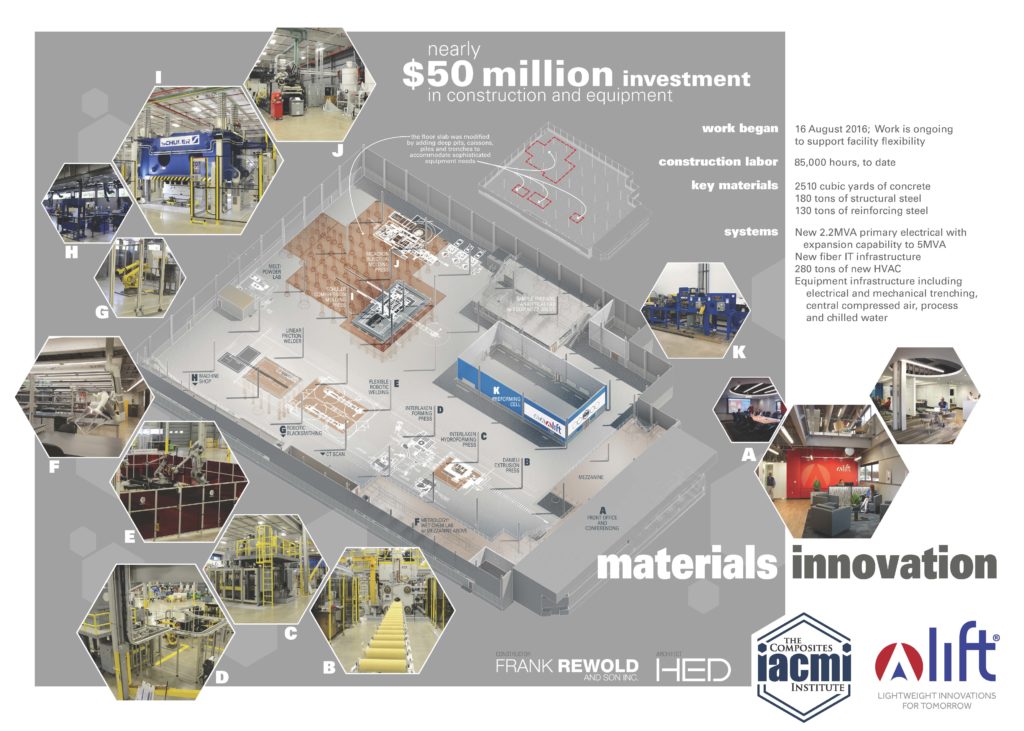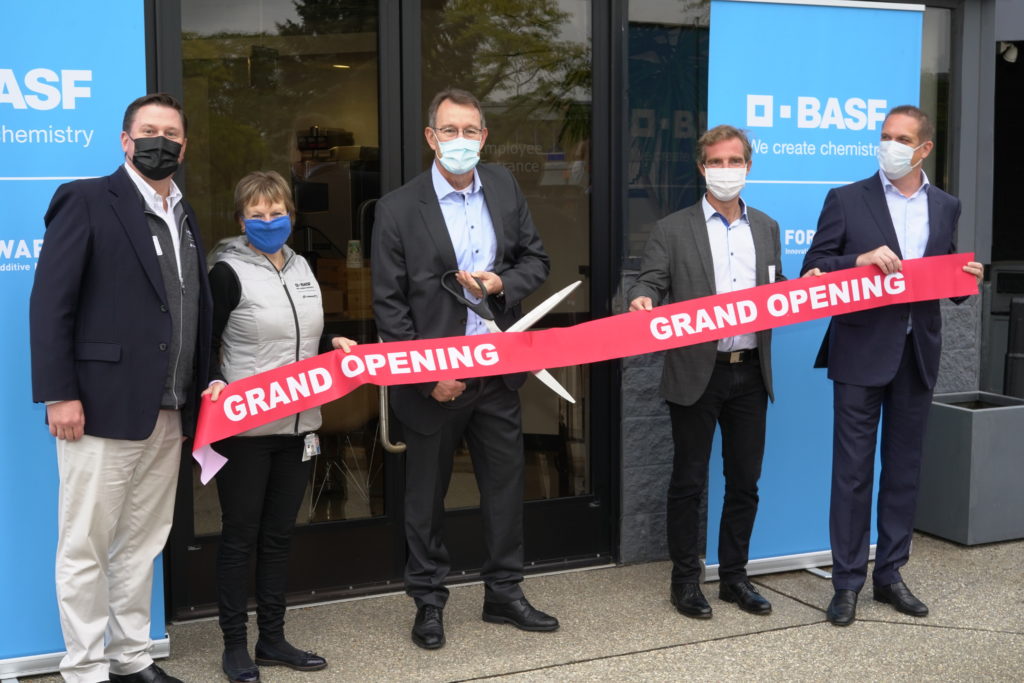The world’s largest chemical company, BASF, is growing rapidly within the 3D printing industry through its Forward AM brand. After cutting the ribbon on an Additive Manufacturing Technical Center in Shanghai, China in August 2021, the conglomerate has already established Additive Manufacturing (AM) Applications Technology Center (ATC) in Detroit, Michigan in cooperation with Michigan State University (MSU).
While the Shanghai facility will services customers in the Asia-Pacific region, the new ATC in Detroit will act as the company’s North American hub. With such services as predictive modeling, the center will combine Forward AM’s range of 3D printing materials with MSU’s technical expertise to support 3D printing related developments in the region.
The ATC is stocked with over 20 3D printers, including selective laser sintering, photopolymer 3D printing, fused filament fabrication systems. Located in the industrial Corktown district of the city, the center is not far from “top” Detroit businesses and multiple BASF customers.
“With this step we are significantly strengthening our offerings in North America. By collaborating with Michigan State University, we create a unique combination of science and industry expertise – ideal conditions to drive innovation in Additive Manufacturing together with our customers,” says François Minec, Managing Director BASF 3D Printing Solutions.
“MSU is committed to strong industry partnerships as an engine to drive innovation, economic opportunities, and skills development that meet emerging technology needs. The Scale-up Research Facility (SuRF) in Detroit, established with funding from the Michigan Economic Development Corporation and Department of Energy through the Institute for Advanced Composite Manufacturing Innovation, is a prime example of the effectiveness of place-based innovation. BASF has been among MSU’s strongest partners at the SuRF, and we are extremely pleased to expand our relationship to assist in establishing the BASF Applications Technology Center within the SuRF space. We are confident this collaboration will result in significant advances in Additive Manufacturing, new workforce development opportunities, and sustainable economic growth,“ says Doug Gage, Vice President for Research and Innovation Michigan State University.
In addition to opening the new facility, BASF has made an investment in the SuRF space, meant to aid in the chemical giant’s AM strategy and desire to develop “more sustainable industrial solutions”. Together with MSU, the company aims to blend education and industry to further contribute to the industrialization of 3D printing in the Americas.
BASF is not the only company to launch these technology centers, which are not only prevalent within 3D printing but in industry as a whole. Educational institutions often rely on corporate partners to fund research and development labs meant to aid industrial partners, often in the regional vicinity. For a more novel technology, like AM, this will certainly facilitate wider adoption as customers learn more about it and how to integrate it into their existing operations.
Two centers in two months, however, is just another signal of BASF’s rapid growth in the 3D printing space. Fossil fuel companies have been looking to convert their businesses away from energy and toward materials as the global economy makes its slow shift to renewable energy. As a chemical giant, BASF is a demonstrator of the direction things are headed, as it invests in advanced manufacturing that is heavily reliant on plastics.
In addition to these two centers, BASF now owns one 3D printing service, Sculpteo, has partnered with another, Shapeways, and invested in yet another, Materialise. It has also spun out a firm dedicated to 3D printing spare parts, which has long been considered a prime market for 3D printing disruption and now has the largest chemical conglomerate putting weight into it. Surely we’ll see more 3D printing centers opened by BASF in the near future, but I’m sure there’s much more than that planned.
Subscribe to Our Email Newsletter
Stay up-to-date on all the latest news from the 3D printing industry and receive information and offers from third party vendors.
You May Also Like
Gorilla Sports GE’s First 3D Printed Titanium Cast
How do you help a gorilla with a broken arm? Sounds like the start of a bad joke a zookeeper might tell, but it’s an actual dilemma recently faced by...
Nylon 3D Printed Parts Made More Functional with Coatings & Colors
Parts 3D printed from polyamide (PA, Nylon) 12 using powder bed fusion (PBF) are a mainstay in the additive manufacturing (AM) industry. While post-finishing processes have improved the porosity of...
$25M to Back Sintavia’s Largest Expansion of Metal 3D Printing Capacity Since 2019
Sintavia, the digital manufacturing company specializing in mission-critical parts for strategic sectors, announced a $25 million investment to increase its production capacity, the largest expansion to its operations since 2019....
Velo3D Initiates Public Offering in a Bid to Strengthen Financial Foundations and Drive Future Growth
Velo3D (NYSE: VLD) has been among a number of publicly traded 3D printing firms that have attempted to weather the current macroeconomic climate. After posting a challenging financial report for 2023,...


































